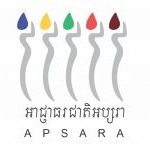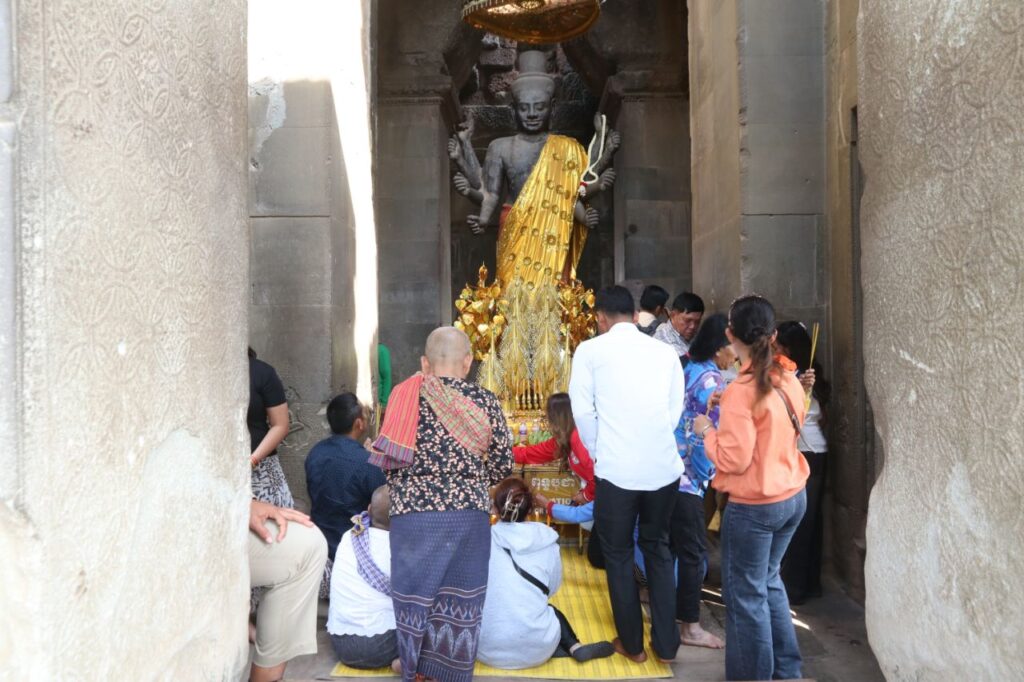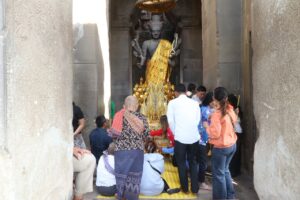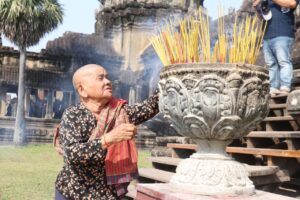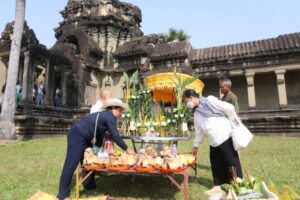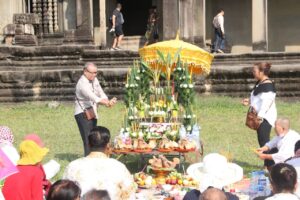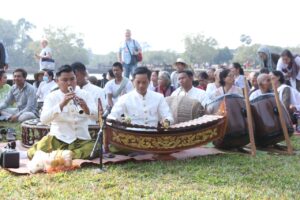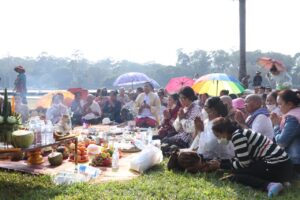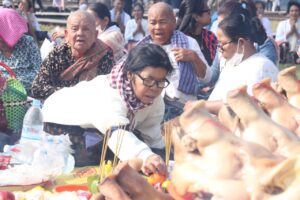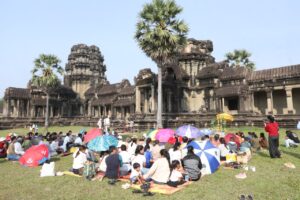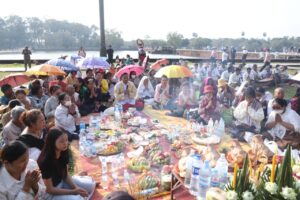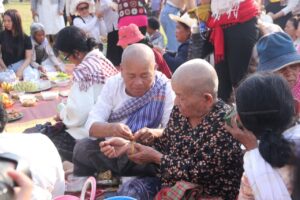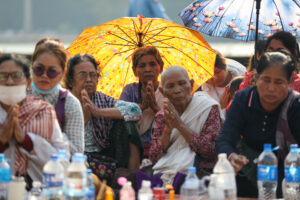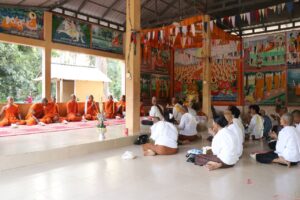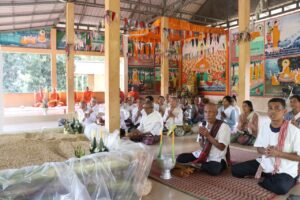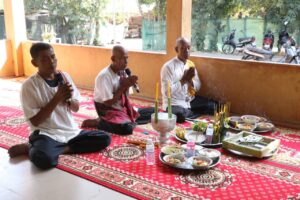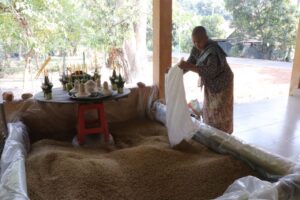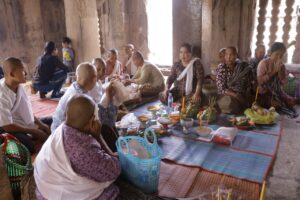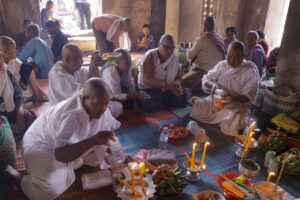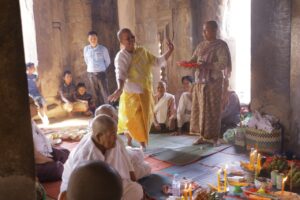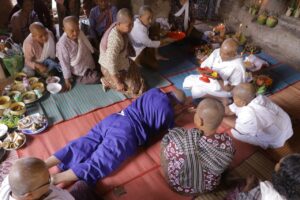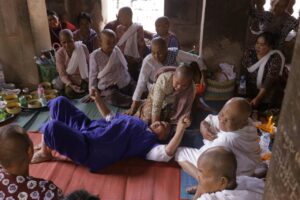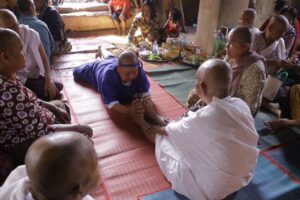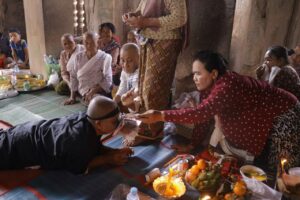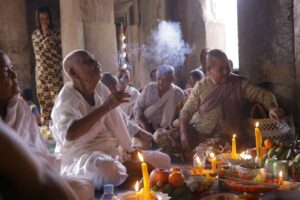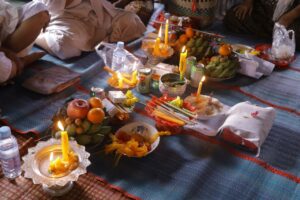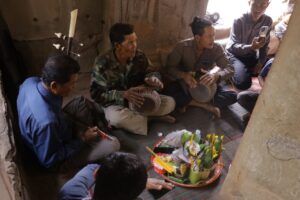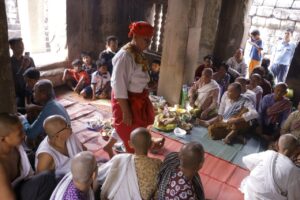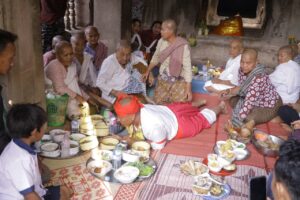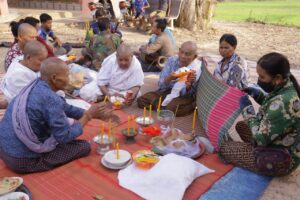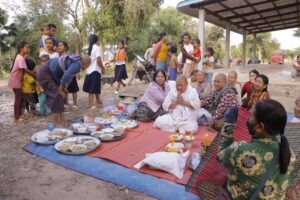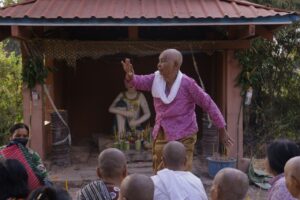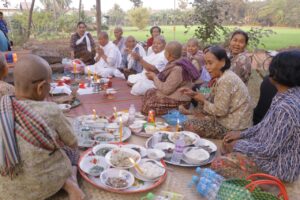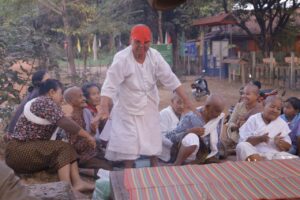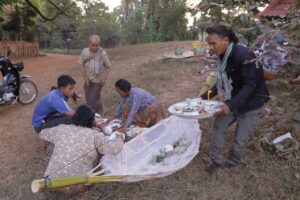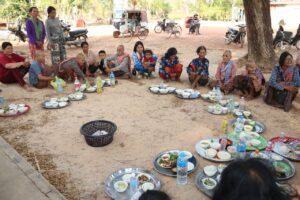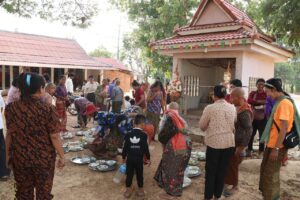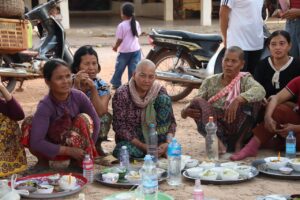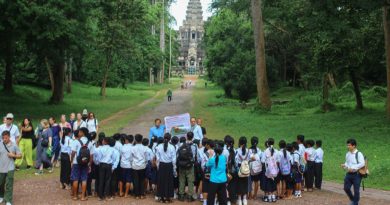ពិធីឡើងមាឃឬឡើងអ្នកតា គឺជាប្រពៃណីទំនៀមទម្លាប់ដ៏យូរលង់មកហើយ របស់អ្នករស់នៅជុំវិញតំបន់អង្គរក្នុងខេត្តសៀមរាប។
អ្នកស្រុកតែងនាំគ្នាប្រារព្ធពិធីនេះក្នុងគោលបំណងសុំសេចក្តីសុខសប្បាយ សុំឱ្យមានទឹកភ្លៀងគ្រប់គ្រាន់ ក្នុងការធ្វើកសិកម្មឆ្នាំក្រោយ សុំឱ្យដីមានជីវជាតិទទួលបានភោគផលច្រើន ឱ្យសត្វចៀសផុតពីជំងឺ ជាពិសេសគឺបង្ហាញពីការបិទបញ្ចប់រដូវធ្វើកសិកម្មកាលពីឆ្នាំមុន។
ជាទម្លាប់រៀងរាល់ឆ្នាំឱ្យតែដល់ថ្ងៃ៣កើតខែមាឃ រហូតដល់ខែផល្គុន(ខែកុម្ភៈ-មីនា)អ្នកស្រុកក្នុងតំបន់អង្គរតែងនាំគ្នាប្រារព្ធពិធីឡើងមាឃយ៉ាងគគ្រឹកគគ្រេង ទៅតាមលទ្ធភាពដែលពួកគេមាន មិនដែលខកខានឆ្នាំណាឡើយ។
បច្ចុប្បន្ននៅជុំវិញតំបន់អង្គរ គឺភូមិជាច្រើននៅតែប្រារព្ធពិធីនេះ ដូចជា៖ ភូមិរលួស និងភូមិដូននំ(ឃុំបាគង)ភូមិបង្កោង, ភូមិគីរីមានន្ទ និងភូមិត្នោត(ឃុំអំពិល)ស្រុកប្រាសាទបាគង ភូមិនគរក្រៅ ភូមិគោកត្នោត ភូមិគោកបេង (សង្កាត់គោកចក) ភូមិក្រវ៉ាន់(សង្កាត់នគរធំ) ភូមិសាលាក្រវ៉ាន់(ឃុំរំចេក) ភូមិក្រសាំងរលើង(សង្កាត់សៀមរាប) ភូមិភ្នំក្រោម(សង្កាត់ចុងឃ្នៀស)ក្រុងសៀមរាប ភូមិប្រដាកនិងភូមិថ្នល់ត្រង់(ឃុំព្រះដាក់) ភូមិស្រែចង្កូត(ឃុំរុនតាឯក)ស្រុកបន្ទាយស្រី និងភូមិដូនឪ ភូមិតាប្រុក ព្រមទាំងភូមិលាងដៃ(ឃុំលាងដៃ)ស្រុកអង្គរធំជាដើម។
ពិធីនេះ ធ្វើឡើងនៅកន្លែងផ្សេងៗគ្នា ដូចជា៖ នៅខ្ទមអ្នកតា នៅសាលាឆទានក្នុងភូមិ នៅកន្លែងទីទួលបុរាណដែលពួកគាត់គោរពបូជា នៅប្រាង្គប្រាសាទ ឬវត្តអារាមជាដើម។
ទំនៀមបុរាណមួយនេះ មានលក្ខណៈខុសគ្នាខ្លះទៅលើកិច្ចពិធីនិងរៀបចំគ្រឿងរណ្តាប់បូជាសំណែន ដូចជា៖កន្លែងខ្លះធ្វើម្ហូបអាហារចំណីចម្រុះ ខ្លះធ្វើនំបញ្ចុក ខ្លះពូនភ្នំស្រូវ កន្លែងខ្លះមានលៀងមេមត់ កន្លែងខ្លះក៏មានពិធីចាប់ត្រីរួមគ្នានៅត្រពាំងបុរាណ។ ឯកន្លែងខ្លះទៀត ទោះស្ថានភាពជីវភាពមិនប្រសើ ប៉ុន្តែអ្នកស្រុកនៅតែអនុវត្តប្រពៃណី ទំនៀមទម្លាប់ របស់ខ្លួនយ៉ាងខ្ជាប់ខ្ជួន។
តាមទំនៀមជាទូទៅ អ្នកភូមិនៅតំបន់អង្គរ ធ្វើពិធីឡើងមាឃនៅខ្ទមអ្នកតាអាចតែមួយល្ងាច ឬអ្នកភូមិខ្លះទៀតអាចធ្វើរយៈពេលមួយយប់មួយថ្ងៃ។ ដោយអ្នកភូមិ រៀបចំធ្វើនំបញ្ចុកឬម្ហូបអាហារតាមផ្ទះរៀងៗខ្លួន រួចយកទៅផ្តុំគ្នានៅកន្លែងប្រារព្ធពិធី។
ក្នុងកិច្ចពិធីមួយដ៏សំខាន់នៃពិធីឡើងមាឃ ក៏មានការបញ្ជូលរូបអ្នកតា (ឬពិធីស្នងរូប) និងមានពិធីលេងភ្លេងមេមត់យ៉ាងអធិកអធមទៅតាមតំបន់ផ្សេងៗគ្នា៕
អត្ថបទ៖ការិយាល័យផ្សព្វផ្សាយ
រូបភាព៖លោក ហាប់ គឹមអាន, ភោគ ជា , រដ្ឋ ផល្លីន ,យី សុថា ,សឿន ប៊ុនស័រ
The Lerng Meak or Lerng Neak Ta Ceremony is a significant cultural tradition for the residents of the Angkor area in Siem Reap Province, Cambodia. This ancient ceremony is celebrated to invoke blessings for happiness, sufficient rainfall for the upcoming farming season, fertile land for abundant crops, and protection for livestock from diseases. It also serves as a way to mark the conclusion of the previous year’s agricultural activities.
Typically held between February and March, the Lerng Meak ceremony is an annual event that communities in and around the Angkor site participate in with great enthusiasm. Villages such as Rolous, Daun Nam, Bangkorng, Kiri Meanon, and others in various communes celebrate this tradition, ensuring that it remains a vibrant part of their cultural heritage.
The ceremony takes place in various locations, including village halls, temples, pagodas, and even ancient mounds used for worship. The rituals associated with Lerng Meak can differ from one village to another. Some may prepare a variety of foods or noodles, while others might engage in activities like filling rice fields or performing traditional dances. Some communities even hold fish-catching events in ancient ponds.
The ceremony typically lasts for one evening, though some villagers may choose to extend it throughout the night. Participants prepare food at home and gather at the designated ceremony site to celebrate together. A key highlight of the Lerng Meak is the Leang Memot Ceremony, accompanied by memot music, which varies by region and adds a unique flavor to each village’s celebration.
Despite economic challenges, many locals continue to uphold these traditions, showcasing their resilience and commitment to cultural practices that have been passed down through generations. The Lerng Meak ceremony not only strengthens community bonds but also preserves the rich cultural identity of the people living in the Angkor region.
Article by Office of Communication
Photos by Hap Kim An, Phouk Chea, Rath Phallin, Yi Sotha, Soeun Bunsor
Translation by Net Phirun
